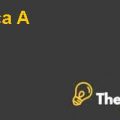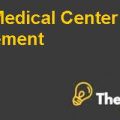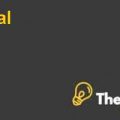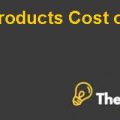Net profit to sale ratio or profit margin ratio shows the company earnings from its operation over the sales of the company in a year. Graph representing an operating profit to sale ratio shown in Exhibit 2 of both retailers. Net profit to sale percentage of Ahold shows that its Net profit increasing till 2010, but it slightly decreases in 2011. Meanwhile, Tesco Net profit percentage decreases in the first three years, but in the year 2011, it slightly increases as compared to the year 2010.
Interest coverage ratio is also the key indicator the financial statement of the company. Interest coverage ratio of the company shows that how many times companies earned as compared to interest expense. Graph representing an interest coverage ratio shown in Exhibit 3 of both retailers. Interest coverage ratio of Ahold shows that it slightly decreases in the year 2009, but after that it shows the increasing trend till 2011. On the other hand, the Tesco interest coverage ratio showing the increasing trend in all the four years which is better for any organization.
Current Ratio indicates that what ratio of current liabilities are paid by the company’s current assets. Graph representing a current ratio shown in Exhibit 4 of both the retailers. Current ratio of Ahold shows the increasing trend in first two years, remain constant in third year then it decreases in 2011. While, current ratio of Tesco shows the decreasing trend in all the four years from 2080 till 2011.
Return on Asset indicates that how efficiently organization has used their assets to generate the returns. Return on asset is calculated by dividing net earnings of the company with the total asset of the company. Graph representing a Return on Asset shown in Exhibit 5 of both the retailers. Assets Turnover of Ahold shows the increasing trend in all the four years. While, assets turnover of Tesco shows the increasing trend from 2008 till 2010 but it slightly decreases in 2011.
Equity Multiplier shows that how much assets are financed by shareholders' equity in the organization. Equity multiplier is calculated by dividing total assets of the organization by total shareholder equity of the company. Graph representing a equity multiplier shown in Exhibit 6 of both the retailers. An equity multiplier of Ahold shows the decreases trend from 2008 till 2010, but after 2010 it shows the increase in 2011as compared to 2010. While, an equity multiplier of Tesco shows the decreasing trend from 2008 till 2010 but it slightly increases in 2011.
DuPont analysis of the financial statement shows that how return on equity changed by change in profit margin, total asset turnover and equity multiplier. While return on equity shows that how much company has earned on its total equity. Graph representing a return on equity shown in Exhibit 7 of both the retailers. Return on equity of Ahold shows the decreasing trend from 2008 till 2010, but after 2010 it shows the increase in return 2011as compared to 2010. While, return on equity of Tesco shows the decreasing trend in all the four years from 2008 till 2011.
CONCLUSION:
All the analysis above is done with respect to the financial ratios of financial management, therefore it is concluded that Ahold is the better retailer for investment. As Ahold has better equity return as compare to Tesco. Although Ahold return on equity is decreasing in the year 2009 and 2010 as compared to 2008 but Ahold retains it and in the year 2011 it again rises from the level as it is in 2010. In the same way net income to sale ratio following the same hierarchy as return on asset follows, that net income sale ratio decreases in the year 2009 and 2010 as compared to 2008 but retains in year 2011 and increases as compared to 2010..........................
This is just a sample partial case solution. Please place the order on the website to order your own originally done case solution.














